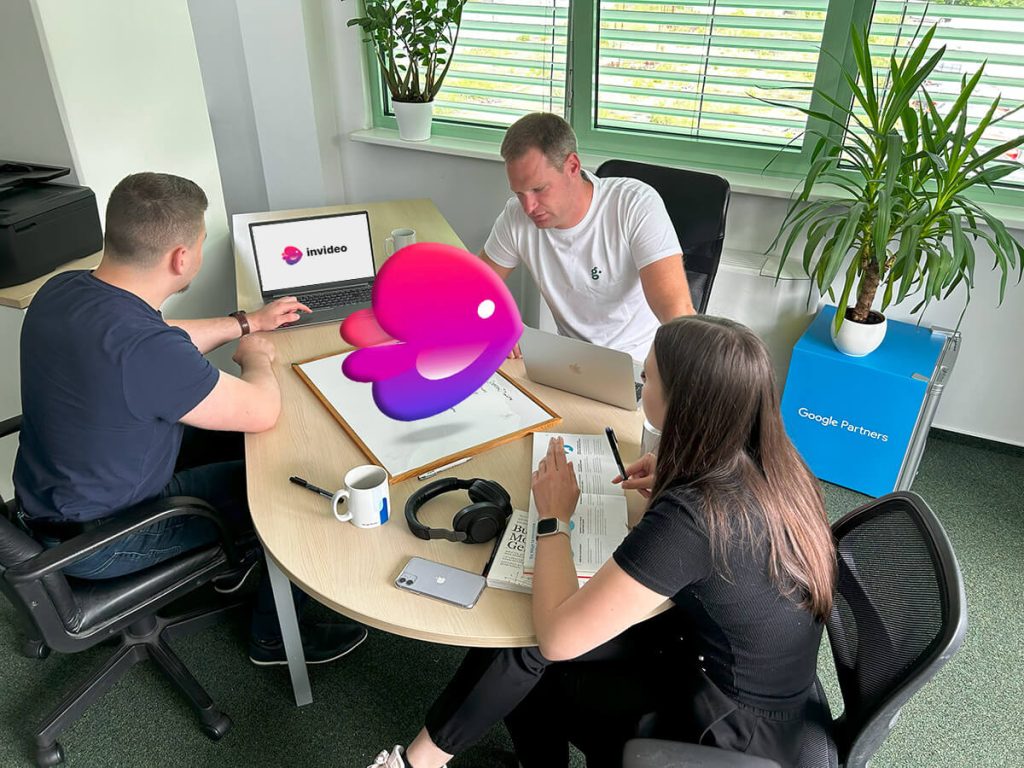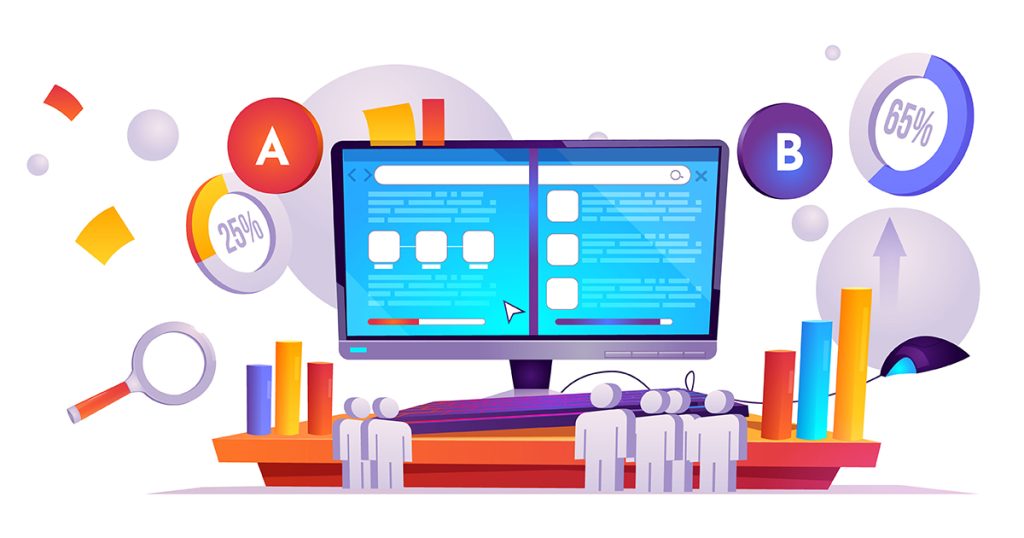Consider your day. Doubtless throughout, you’ve had innumerable interactions with various people & brands vying for your attention (and hard-earned money). Which, if any, do you remember? Will you remember them a year from now? How can I get you to remember this one?
While a focus on experience, XM, X-analytics & other buzzwords is currently all the rage. If we take a step back from the shiny new trends & try to see the forest through the trees, it all seems to be about building relationships – building trust (which consequently increases profits). This has been something companies have been striving to do for as long as I can remember. But how do we gain trust? Even more importantly, how do we do it without it costing us an arm and a leg?
It is Pretty, Therefore, I Trust It
Psychologically, aesthetics tends to play a key role in our trust. The more beautiful the person, the more likely we are to trust them. Monkeys that we are, we seem to decide on the “trustworthiness” of an individual within a few hundred milliseconds of our first interaction.
First impressions seem to matter, a lot. Luckily this can be accomplished through good design & branding. I’m not claiming that a pretty website will solve all your problems, but investing in good design should have an obvious & immediate impact on consumers’ opinion of your brand. As with everything, testing is key. Try redesigning simple materials, such as digital ads, first & work with your audience to see what works for them.
It Agrees with Me, Therefore, I Believe in It
Ah, cognitive biases, as much as they tend to get in the way of things, there’s something delightfully human in making mistakes, isn’t there?
There’re heaps of information on confirmation bias on the internet, so I won’t waste too much of your time on it. However, I would like to mention that the trick is not necessarily about just agreeing with your customers or them directly agreeing with you, but more in creating a shared value system. Make your tribe & they will not only love you, but defend you from competition to their family & friends.
It’s Authoritative, Therefore, it’s Credible
In all seriousness; in order to trust, we need to believe that the person or organization we trust is capable of living up to the needs we trust it to fulfil.
If you are not already a large multi-national, you’re going to need to do two things:
- Appeal to authority, and not in the “fallacy” way. Simply utilize authoritative sources in your content, get media coverage & make sure your brand is positioned next to “authoritative” figures.
- Utilize an omnichannel approach. If you can, be in as many places as you can. Post on every (relevant) social media, answer questions in forums & groups, get loads of media coverage & make sure your support is quick. Automation & optimization are your friends here.
I’ve Had Nothing but Good Experiences, Therefore, I Recommend It
Great experiences, great opinions – it’s that simple. But how do we achieve that? Well it all comes down to expectations, which are set by branding, price & various other factors. The truth is, today’s consumers expect to be pampered. They expect immediate responses, great products & polite employees. To achieve a “great” experience, we need to rise above those expectations in small, but meaningful ways.
This is where we, finally, get to customer support directly. Or rather to how we can achieve a great customer support experience without blowing our budget.
Know thy customer
Using customer experience data lets you identify motives, pain points and other insights. I’ve seen organizations with literal decades worth of sales & support data, not being able to identify key pain points. If your organization is more than a year old, you probably already have a wealth of data stored somewhere, waiting to be analyzed. Use it.
- Got recorded sales calls? Run them through a speech-2-text service & run semantic analysis.
- Got campaign data? Try finding what worked & merge that into a new campaign.
- Got emails? Search for common phrases & words within them.

Another mistake, more common with startups, is not simply talking to consumers. Big data analytics, semantic analysis & other forms of statistical analysis are all great. But nothing can beat the insights from a nice interview or tailored survey.
Through this article, I want to get you to shift your perspective from “make bad reviews go away” to “data, crucial for our success”.
The PWC future of CX report highlights the importance of customer service.
- 73% of consumers point to experience as an important factor in their purchasing decisions.
- 54% of U.S. consumers say customer experience at most companies needs improvement
- 59% will walk away after several bad experiences, 17% after just one bad experience.
All of this is also key in other optimization steps. Creating self-service support or using chatbots are effective solutions to lowering costs & increasing quality of service. But before implementing them, you need to know if these types of solutions are what will be best for your customers.
Know thyself
To build customer experience, you need a strong foundation. You do that by putting your employees first. Excellent employee experience will translate into top-notch customer care, or simply – happy customer support = happy customers.
Listen to your employees and address their concerns. Involve them, make them feel valued. Essentially, turn them into your brand’s ambassadors. That way, they will approach customer inquiries with a genuine wish to help and improve.
By continuously listening to your employees, you can address problems before they start affecting results. Instead of just gathering and measuring feedback, take immediate action. From onboarding through training to full-time employees – make their experience a high priority & they will make your customers a high priority as well.
Act on Customer Experience
Customer support is often the first to recognize current and recurring issues. Thus, they can quickly identify key insights vital to your organization’s success.
Connect your customer service agents with UX, marketing or even product development teams. Let them explain the issues they come across, and hear their suggestions for improvement.
Involving customer support with other departments, letting them share their experience and ideas for potential solutions shows them that their efforts have meaning and contribute to the company’s progress. We all like to have a purpose, wouldn’t you agree?
Invest in self-service
Is your customer service constantly bombarded with the same 10 questions? Congratulations – you’ve identified some of the main issues your customers are facing. Next step? Create or upgrade your self-service.
If you want to save money quickly, add answers to the most common customer questions to your FAQ section. Include them on product pages. Write blogs posts explaining the most common issues in more depth. Invest into a knowledge hub, tutorials or videos.

Make Customer Support Visible & Accessible
Make sure you make that help content easily accessible and visible. On too many websites, visitors must scroll and click through the entire page for the FAQ or blogs. More often than not those sections are hiding in the footer. Why not put it in the header instead?
Connect your customer support and UX teams to find the solution that fits the architecture of your website.
That way, a lot of your customers will be able to get their answers without even having to contact your support. Most people dislike doing that anyway, so their experience with your brand will be much better if they can solve their issues on their own, while allowing support staff more time to focus on those who need an extra bit of help.
Use virtual assistants and chatbots
Artificial intelligence (AI) is opening new frontiers. Automated, self-learning, and intuitive, AI-based solutions are the answer to lowering labor costs.

Chatbots Magazine reports that using chatbots as your virtual customer service can cut customer service costs by 30%. Seeing as annually, businesses spend $1.3 trillion on 265 billion customer service calls, that can be quite a bit of change back in your pocket.
While that does sound promising, what are customers saying about their questions being answered by a chatbot instead of a human? 2016 Aspect Consumer Experience Index reports that 61% of consumers feel that chatbots are the future of customer service, while 70% of millennials report positive experiences with them.
Aspect Index cites another argument in favor of AI customer help: two-thirds of consumers feel good when they can handle a customer service issue without having to talk to a person.
When speed is vital
The main benefit of chatbots & other automation is quicker response time.
In a long line of emails, texts, and calls, your customers’ messages will have to wait their turn. Depending on the size of the company, this could be minutes, hours or even days. All the while, your customer is having a bad experience.
Chances are that they only have a simple question or issue, and properly thought-out virtual helpers can answer up to 80% of most frequent questions.
Solving your customers’ problem quicker is definitely a better experience, but if you’d like to further improve it, you could always follow up on solved chats with unique offers. Giving small gifts “for their troubles” might be just the thing that makes a good experience a great one.
While this point holds strongest with chatbots & other automation, it can be applied throughout. Your customers may love to have a direct phone call with you, but what they really want is their problem solved.
If, due to growth, you find yourself unable to handle calls & have to keep customers on hold for extended periods, consider removing that option & switching to a simpler solution such as e-mail or chat. This will give your support team the ability to solve more problems in a shorter period of time, thus helping more people.
It’s all an opportunity
One final thing. Try viewing customer support not from a perspective of “cost per ticket” but from that of opportunity cost. While lowering costs through various optimizations & automations will look great on your quarterly report (and honestly, more power to you), if you’d like your annual report to look great, investment is key.

By investing into the experience your customers have with your support channels, you will be directly impacting sales through customer loyalty, word-of-mouth & more. Every ticket failed is a potential ambassador lost. So adding new metrics such as NPS, return sales & more is crucial to not only providing great experiences, but ensuring your organization keeps investing in them. After all, profit is king. We hope this article has given you an insight into the importance of nurturing both your customers and your employees. While we’ve had to paint with a broad brush throughout this article, sometimes needs are very specific. We’d be happy to help analyze and/or improve your customer support.











